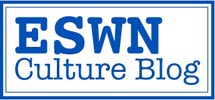
You Are What Your Read - Part 2
Upon entering the living room, there are bookshelves to the left.
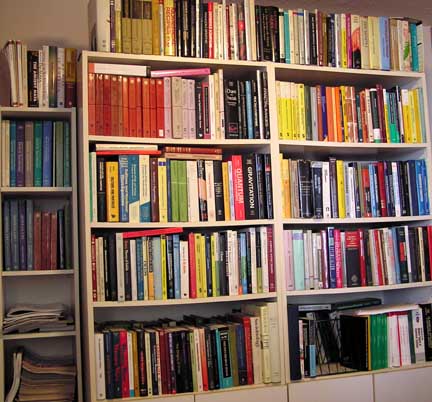
[The top row has books on theoretical and applied computer science (such as
Donald Knuth's books on algorithms, the theory of computation and computability,
compiler theory, recursion theory, numerical algorithms, etc).]
These books came from my university studies (mathematics, physics, biology). Here are the individual shelves:
On the slim bookshelf on the left are the over-sized books on genetic algorithms and artificial life.
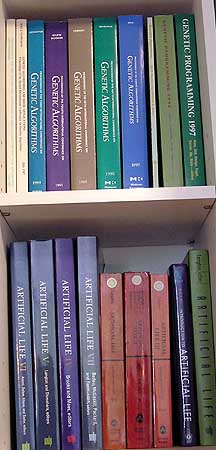
The Santa Fe Insitute books on complexity, the
Stephen Wolfram books on cellular automata, chaos and fractals
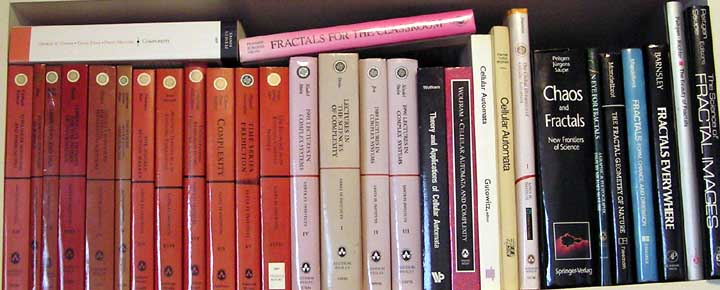
Solitons, superstrings, general relativity,
gravitation and quantum theory of fields.
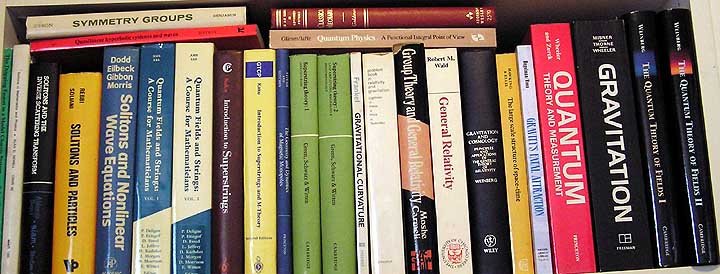
Statistical mechanics and chaos theory:
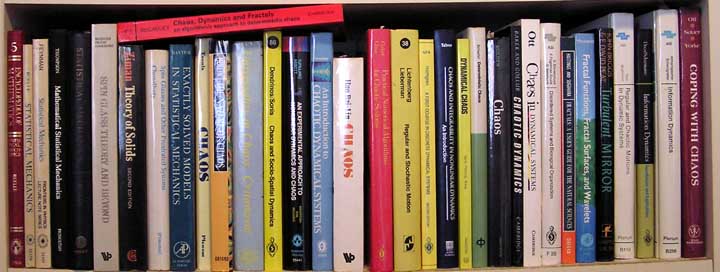
More mathematical biology (swarm intelligence,
infectious disease, epidemiology, sociobiology, etc).
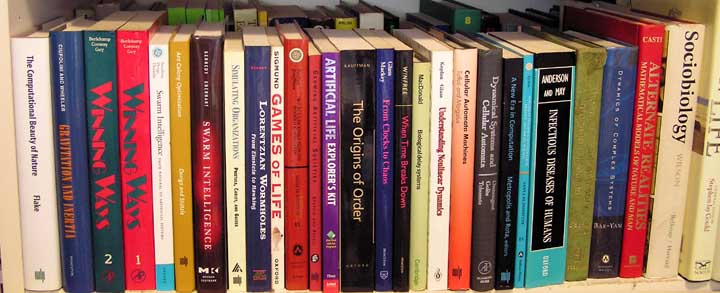
Operations research, population demography,
graph theory, etc.
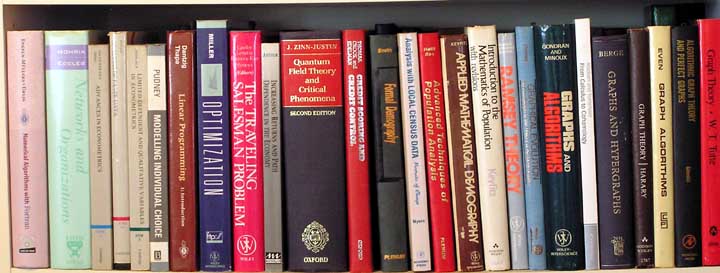
Operations research, combinatorics, linear,
nonlinear and integer programming.
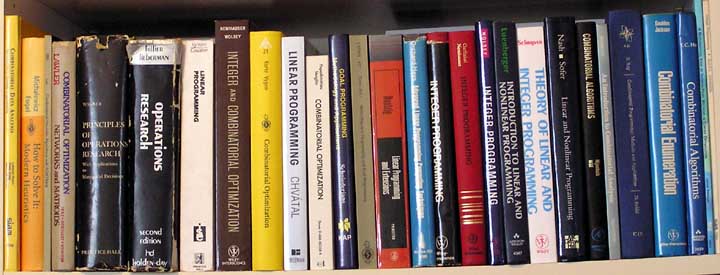
Algebraic and diffential topology, homotopy and
homology theory, fibre bundles, knot theory, Riemannian geometry,

Looking from the doorway straight ahead is a window, to the left of which is a longer row of bookshelves. These are my professional working books (such as media research, statistics, computer programming, etc).
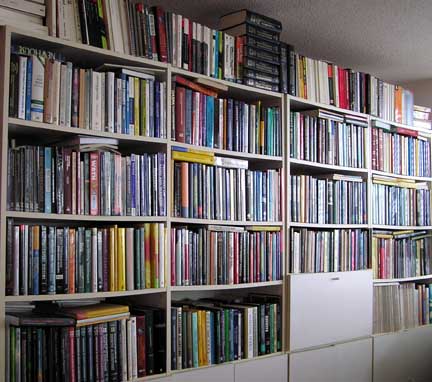
Media research

Media research, media planning, media industry
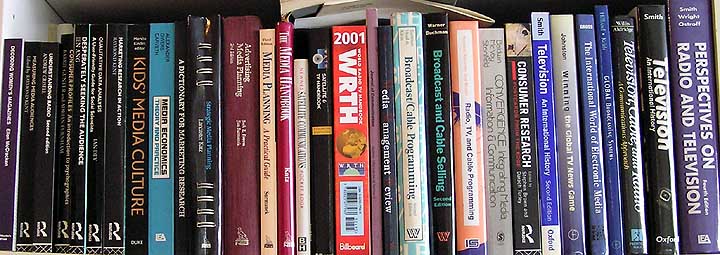
Machine learning, data mining, statistical
learning
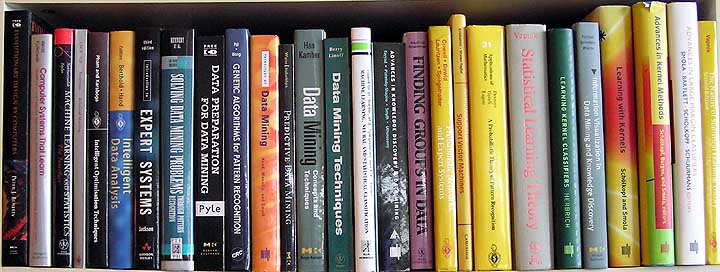
Genetic algorithms, genetic programming,
evolutionary computing
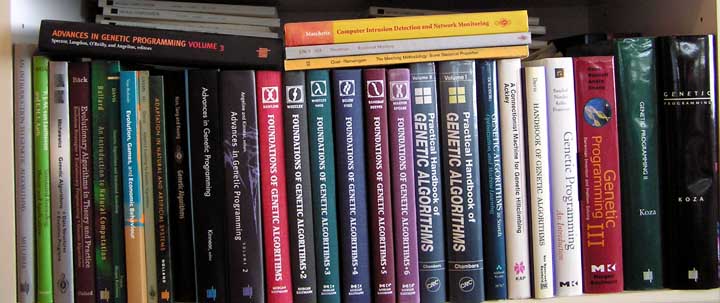
Neural networks
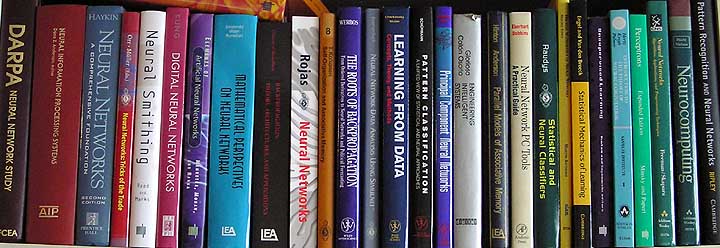
Wavelets. What is that? Someone
once visited me on some other matter and brought along his cousin, who
completely flipped out when he saw the wavelet books. He had never met any
other person interested in wavelets. Anyway, he was an acoustic
engineering who specializes in designing concert hall. We had a good chat.
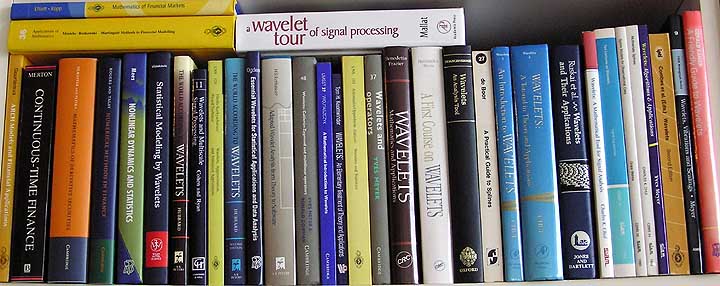
Oh, I forgot to mention that just about every
bookshelf in this apartment is doubled up -- that is, there is another row of
books behind that which you can see from the front. Thus, you can double
what you see in these photographs. In the photo below, I have peeled off
the wavelet books to show the books behind: SNOBOL4, ICON and Smalltalk programming
languages.
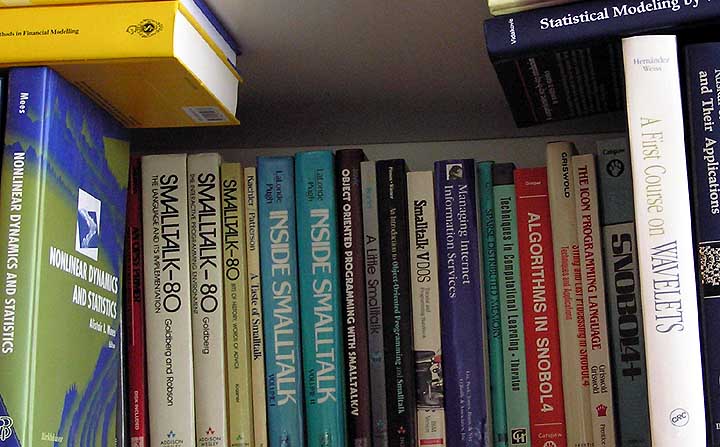
Nonlinear time series analysis: fractals,
scaling, chaos, neural networks.
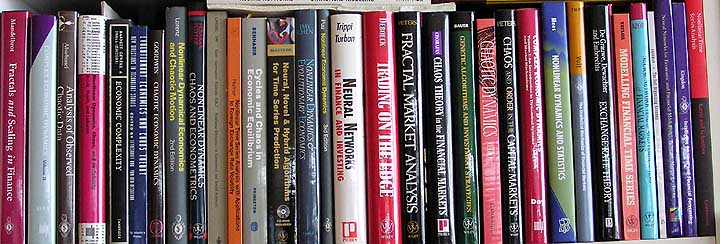
Clustering, multidimensional scaling,
segmentation, correspondence analysis, multivariate analysis, survey sampling
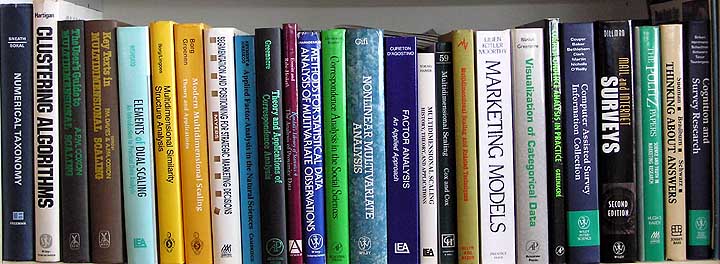
Asset-backed securities, options theory.
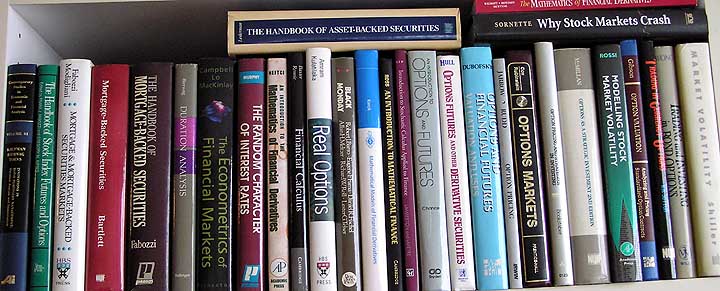
Classical texts on survey sampling.
Kish's Survey Sampling is well beaten up due to constant professional
needs.
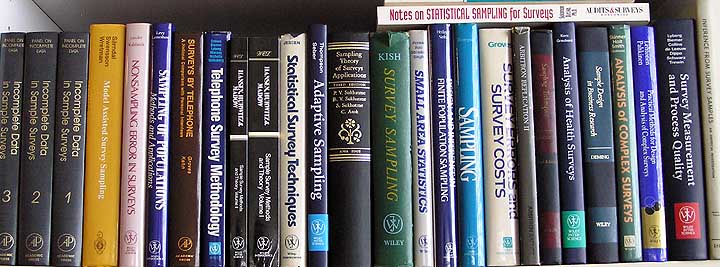
This is a smaller shelf and therefore all the
paperbacks are kept here. They range from Harry Markowitz's Portfolio Selection,
to A Guide to Feynman Diagrams in the Many-Body Problem.

Robust statistics, jackknife, bootstrap,
imputation, the Kendall and Stuart volumes on The Advanced Theory of Statistics
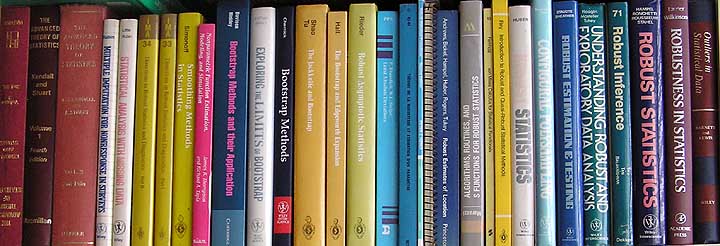
Regression analysis, experimental design,
analysis of variance, estimation theory, hypothesis testing, the collected works
of John Tukey
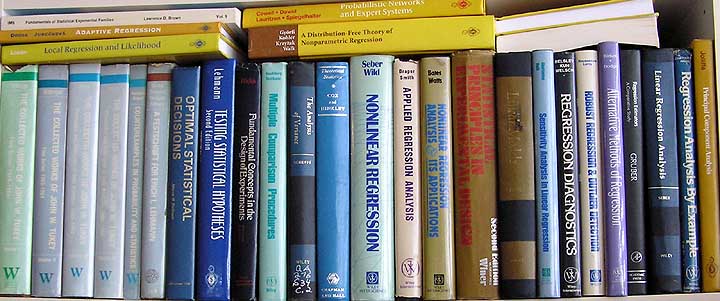
Time-domain and frequency-domain time series
analysis
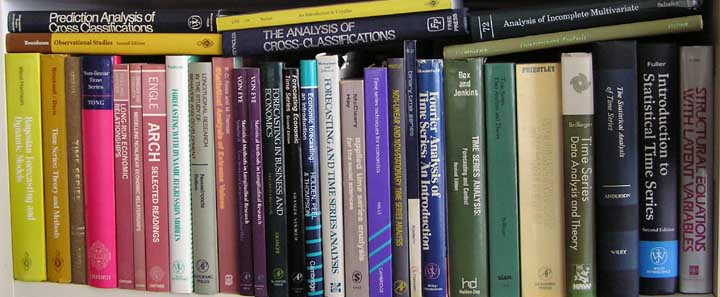
To the right side of the living room is a small
desk with a bookshelf on top. The audio equipment on the desk are for
professional purposes (as opposed to recreational).
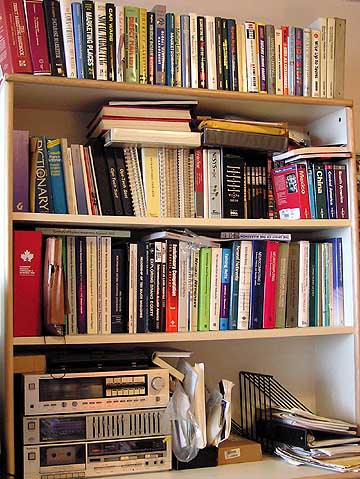
The lower row are the over-sized books, mostly
conference proceedings and collections.

Included are these three books which I authored:

See The Bedroom